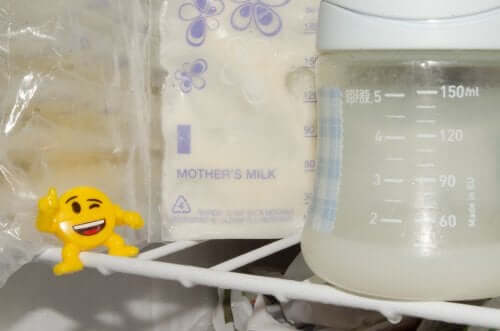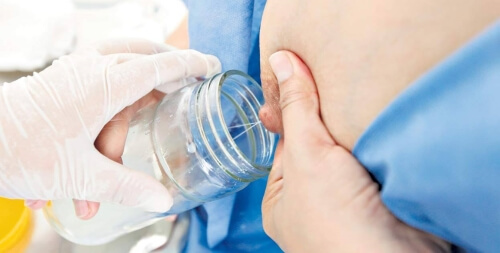What If You’re Producing Too Much Breastmilk?
On occasion, mothers can produce more breastmilk than their child needs and this can cause a lot of discomfort.

Nature has given women the ability to produce the ideal food for babies’ development. The amount of breastmilk produced will vary depending on the baby’s individual needs, as well as the frequency of nursing and even the mother’s emotional state. There are circumstances, however, when you may be producing too much breastmilk.
One of the most common concerns among women who have recently given birth is whether or not they’ll have success at breastfeeding. New mothers often doubt their ability to produce enough breastmilk and they can experience anxiety. The more the baby nurses, the more milk our bodies will produce in order to satisfy them. But in some cases, the production can be excessive.
How do you know if your breastmilk production is excessive? The first symptom is engorgement, where the breasts become hard and painful. You may even let down uncontrollably when you’re near another infant or you hear another baby cry.
In addition, there are other symptoms that aren’t as evident that can become a health problem for the mother.
What should I do if I’m producing too much breastmilk?
Before the milk lets down, there can be a sudden and perhaps painful release. This, in addition to blocked ducts or breast infections, is another symptom indicating that your breastmilk production is beyond what the child needs.
When you produce too much breast milk, the breasts will remain hard and you’ll still have the sensation that they’re full, even if you’ve just breastfed.
In addition, the baby can give signs that things aren’t well when they refuse the breast or they regurgitate a lot while feeding. You can also suspect an infection if you notice any odd-colored or foul-smelling secretions from your breasts.
If you notice any of the above symptoms, you should follow the following recommendations:
- Place a warm and moist cloth over the breasts for a few minutes before each feeding.
- Massage the breasts softly toward the nipples before and during feedings.
- Always use a support pillow to avoid overstimulation that can occur because of breast movement while feeding.
When it comes time to feed your baby, you should use the correct posture. The baby’s suction and tongue movements will let your body know how much milk to provide. A bad latch can provoke greater production and give the baby more than the amount of milk necessary.
If, after following this advice, you still notice that the production of milk is excessive, extract a little with the help of a pump. Remember that you can also easily store breastmilk.

Producing too much breastmilk: learn to store it
If you produce more breastmilk than your baby needs, you always have the option to store it. This alternative is ideal for working mothers. It’s also convenient for any mother who needs to be separated from her baby for long stretches each day.
Extracting milk with a breast pump, or if you prefer, by hand, should take place at the same general time you tend to feed the baby. Likewise, you should refrigerate the milk as soon as possible in a sterilized container. It’s very important to put the date and time of the extraction on the container where you’ve stored the breastmilk. That way, you know when the milk was extracted when you find it at the bottom of the refrigerator. Then you can consume what has been stored the longest first.

How should I use breastmilk that has been pumped and stored?
When breastmilk is extracted and later refrigerated, it’s very likely that the color will change to some degree. It will depend on the foods that the mother consumes and luckily there is no cause for concern. It’s also normal to observe some separation of the fats at the top of the storage container.
Under no circumstances should you blend or shake breastmilk excessively in order to try to homogenize it. Gently shaking the receptacle from one side to the other should suffice in making the fats reincorporate with the liquid again. You have a window of up to 24 hours after pumping to give your baby the reserved milk if you’ve stored it in the refrigerator.
Breastmilk banks
If you produce more breastmilk than your baby needs, you can donate your surplus breastmilk at specialized banks that are located at maternity hospitals or health centers. These locations collect donated breastmilk so it can be given to babies whose mothers are unable to feed them.
You should inquire about such programs at your local health clinic or maternity hospital. You can also ask at your doctor’s office if they’re familiar with any existing programs.
To donate, you should first pump the breastmilk at home and freeze it. Then when you have the time you can quickly take it to the breastmilk bank. All the donations are labeled with the date and time of the extraction. In this way, if you’re producing too much breastmilk, you can help improve the quality of life for another baby. Not every child has access to this beneficial source of nutrition.
